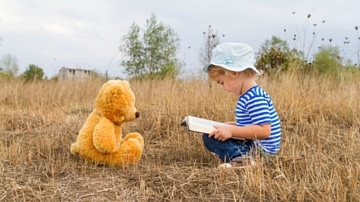Publishing seems like a simple business at its heart: an author writes a manuscript, it’s printed or turned into an ebook, and a reader buys it. That apparent simplicity actually requires a lot of hard work and money on the part of a publisher. As just one example, to create film for printing, print, bind, and jacket a hardcover picture book can easily cost a publisher $25,000, not counting overhead, and their job isn’t done (read more details in Why Does a Picture Book Cost $16?). Novels cost less. Ebooks cost even less. Art books cost even more.
To get a book on the market, a traditional print publisher actually has to do a lot, and someone self-publishing has to find a way to do the equivalent, unless you are happy to do no more than sell locally and to family and friends, or to sell only online. At a publishing company, different people fill the roles listed below. If you self-publish a print book, you have to fill them yourself. Why? Because as a self-publisher you have to compete in a national or possibly global marketplace, head to head with the big publishing companies and many other self-publishers. It’s possible to do that, but it takes time, money, knowledge of the market, and a carefully crafted strategy. (If instead you are seeking a publisher, know that the following outlines what you can expect a publisher to do. Some companies present themselves as publishers when in fact they don’t do all of these things.)
acquisition–which is the right book to publish? Editorial staff may evaluate hundreds or even thousands of manuscripts annually to come up with a “list” of 20 books. An acquiring editor selects the ones she thinks will succeed, and take them through the acquisition process. If you are self-publishing, how do you decide which of your books to do? Or if you have one, how do you know it can succeed?
planning–what needs to be done to get this manuscript from draft to finished book? Once a publisher decides a book is going to be published, everything has to be coordinated so that books get out into the market when the company said they would. At a publisher, a managing editor keeps track of what everyone is doing. If you are self-publishing, you’ll have to fill that role.
editing–how can the manuscript realize its full potential? Are there problems to fix? Polishing needed? At a publisher, the “development editor” is assigned manuscripts as they are acquired and is responsible for getting them into shape (at children’s publishers, the acquisition and development editor are usually the same person). If you are self-publishing, how will you edit your manuscript? Editing yourself isn’t effective. You’ll have to hire someone.
designing–what’s so complicated about designing a book? Anyone can do it with a word processor, right? Well, not if you want a book that’s optimally designed for ease of reading, with a type face that suits your subject, and that doesn’t just look like every other book on the market. And then there is the jacket, to make the book stand out. Publishers keep designers on staff, or hire freelancers. If you are self-publishing, you’ll need a designer.
art directing–are there illustrations needed? You’ll need an illustrator. You must select and pay them. Their work will need to be art directed. Publishers have art directors to work with illustrators in picture books or just on interior and jacket art. They also oversee the designers. If you are self-publishing, you’ll need to take the role of art director, or hire a designer with art direction expertise.
copyediting–once the manuscript is edited, is it done? No, it needs a copyeditor’s eagle eye to check for correct spelling, grammar, and punctuation; to create a consistent approach to such things as compound words; to do some light fact-checking; and perhaps to mark up titles, heads, and subheads. Publishers have in-house copy-editors or take care of hiring freelancers. If you are self-publishing, you’ll need to hire a copyeditor.
production managing–how do you settle on a printer? What do you send them? Will you print traditionally or via POD (print-on-demand)? If e-publishing, how will you create your ebook? A publisher expects a production manager to find printers who can do a good job within their budget; to source paper and other materials; and to oversee the actual production process. If you are self-publishing, you’ll have to do this yourself, or hire a freelance production manager.
distributing–how does the book get from publisher to bookstore or to an online store? Publishers have warehouse operations and relationships with wholesalers and bookstore chains. Even if a book isn’t in a store, it can be readily ordered. If you are self-publishing, distribution may be your biggest challenge. You may need to work with an independent distributor, if you can find one willing to take you on.
selling–how do consumers, bookstores, libraries, and schools find out about new books? Publishers send out catalogs or provide “meta-data” to online sellers, but they also have sales people, who sit down and show the newest books, and tell booksellers or library acquisition committees which are the ones that they should be sure to have. If you are self-publishing, how will you sell your books? Will you be your own sales force, or will you find volunteers–or paid helpers?
marketing/promoting–how does the public find out about a book? Most don’t just pick it up off a shelf in a bookstore. They read a review, see an ad, hear about it from a friend on Facebook, or even watch an author on TV. Publishers have marketing staffs that send out review copies, create promotional items, send out posts on social media, and book authors on tours. If you are self-publishing, you will likely need to hire a marketing specialist.
If you find this list intimidating, good, because that was my intention. Better to be intimidated now, when you can still do something about it, than after you have already made a commitment to self-publish a book and then don’t know what you need to do.
You can use this as something of a checklist in figuring out what you will need to do to get a book on the market, but please note that it is not exhaustive. Nonfiction books may need to be carefully fact-checked, for example, in more detail than a copyeditor would do (and not just by looking things up in Wikipedia). Permissions may be needed for photographs, quotations, or song lyrics. You may even need to consult a lawyer over potentially libelous material.
There’s a lot to do if you want to do it well.
You can learn more about a what a children’s book publisher does in such guides as my Complete Idiot’s Guide to Publishing Children’s Books, The Giblin Guide to Writing Children’s Books, or Olga Litowinsky’s It’s a Bunny-Eat-Bunny World : A Writer’s Guide to Surviving and Thriving in Today’s Competitive Children’s Book Market. Similar books exist in other branches of publishing, but I don’t know them well enough to make recommendations.
Click Here for – Original Post





0 Comments